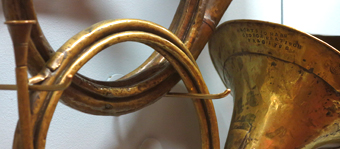At the invitation of Italian choreographer and librettist Salvatore Viganò, Beethoven composed music for Viganò’s ballet Die Geschöpfe des Prometheus (The Creatures of Prometheus), premiered for Empress Maria Theresa at the Vienna Court Theater in 1801. Beethoven’s first work for the Viennese theater achieved instant public acclaim, yet the Overture is the only section of the ballet remaining in the active repertory. It portrays the myth of Prometheus, who was said to have produced two clay statues that became the human race, and who, against Zeus’s orders, stole fire to bequeath to humanity. Beethoven’s Overture begins dramatically with timpani strikes and dissonant chords, which lead into a noble Adagio appropriate to the “heroic-allegorical” subject. The subsequent Allegro section, characterized by a rapid, distinctive main theme in the strings, has been said to illustrate Prometheus’s flight from Olympus after stealing fire from the Chariot of the Sun. Along with the Egmont and Coriolan Overtures, the Prometheus Overture remains among Beethoven’s most enduring works for the stage.
This was written by Molly Barnes, a doctoral student and teaching assistant in the University of North Carolina Chapel Hill Department of Music. She wrote it for the program of the Orchestre Révolutionnaire et Romantique conducted by John Eliot Gardiner in November 2011.


















